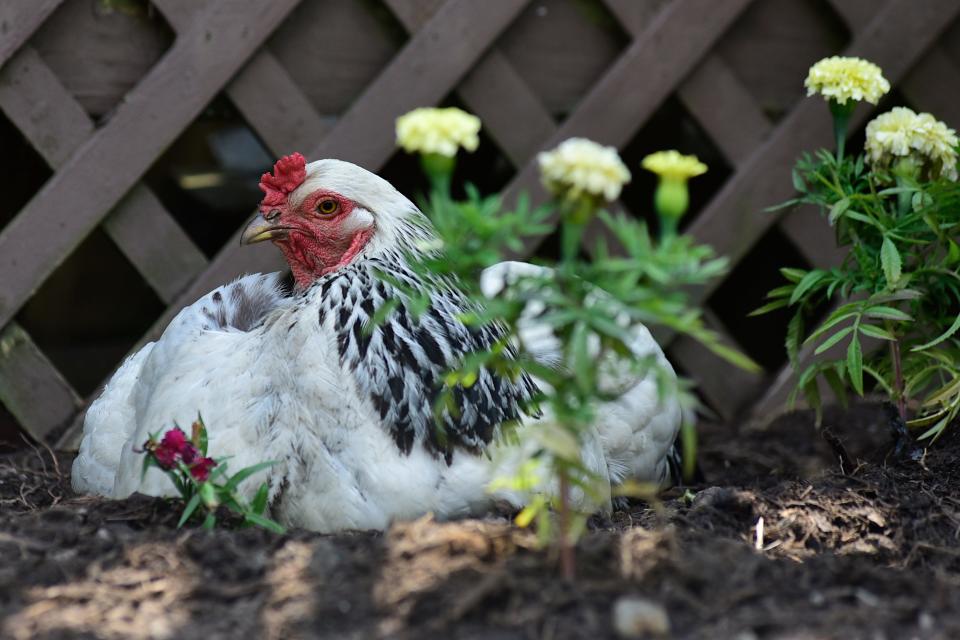'Ample amounts of water': Pets and livestock should be protected from extremely high temps
Extreme heat is as dangerous for animals as it is people.
Temperatures in the mid 90s and heat index values above 100 degrees are forecast every day this week throughout Ohio, the National Weather Service has warned. Even nighttime lows will remain in the mid 70s all week.
Pets and livestock alike are susceptible to prolonged high temperatures, according to Kendra Stahl, the Ohio State University Extension agent for Crawford County.
"The biggest thing with animals is providing ample amounts of water for them," Stahl said. "Shade is good as well. If they're in a barn and you have access, fans to move air around is obviously a pretty good idea."
'Keep air moving for those smaller animals'
Smaller animals are often the most likely to suffer during hot weather.
Chickens, rabbits, guinea pigs and other little creatures should be kept out of the sun as much possible this week.

It helps to put ice cubes in their water, and even set out ice packs for them to lie their bodies against.
Fans, shade and water are the three biggest requirements.
"Just keep air moving for those smaller animals," Stahl said. "Again, ample water and shade is really going to be the biggest thing."
Another tip is to delay feeding until sunset or later, since digestion can increase an animal's body temperature.
Hot surfaces can hurt delicate paws
Cats and dogs can burn their paws on hot sidewalks, decks and roads.
"We wear shoes, so we can't feel that," Stahl said. "But the bottom of the dog's foot is very sensitive to that."
Walks are best had in the early morning or late evening. Take cool water and a bowl in case your pet starts panting.
Never leave animals or people in a parked car
As with children and older adults, pets should never be left in a parked car, according to The Humane Society of the United States.
Temperatures inside vehicles can become deadly even on mild days, the humane society warns.
"On an 85-degree day, for example, the temperature inside a car with the windows opened slightly can reach 102 degrees within 10 minutes," the nonprofit's website reads. "After 30 minutes, the temperature will reach 120 degrees."
Pets exposed to extremely high temperatures "may suffer irreversible organ damage, or die."
Heatstroke in animals should be treated immediately
Like people, high temperatures can lead to heat stroke in animals.
"Some signs of heatstroke are heavy panting, glazed eyes, a rapid heartbeat, difficulty breathing, excessive thirst, lethargy, fever, dizziness, lack of coordination, profuse salivation, vomiting, a deep red or purple tongue, seizure and unconsciousness," the humane society warns.
Pets are more at-risk if they are old, young, overweight, out of shape, or ill.
"Some breeds of dogs − like boxers, pugs, shih tzus and other dogs and cats with short muzzles − will have a much harder time breathing in extreme heat," the nonprofit's website reads.
Animals believed to be overheating should be moved to an airconditioned or shaded area with moving air.
"Apply ice packs or cold towels to their head, neck and chest or run cool (not cold) water over them.," the nonprofit's website reads. "Let them drink small amounts of cool water or lick ice cubes. Take them directly to a veterinarian."
ztuggle@gannett.com
419-564-3508
This article originally appeared on Mansfield News Journal: Pets and livestock susceptible to extremely high temperatures in Ohio

